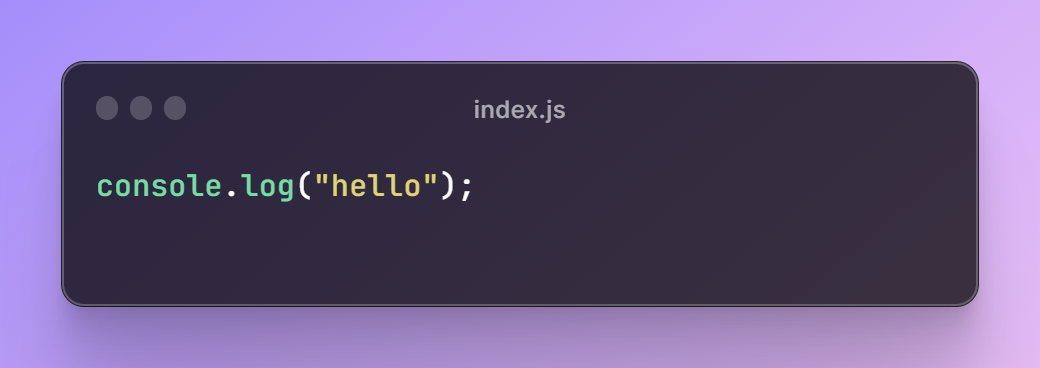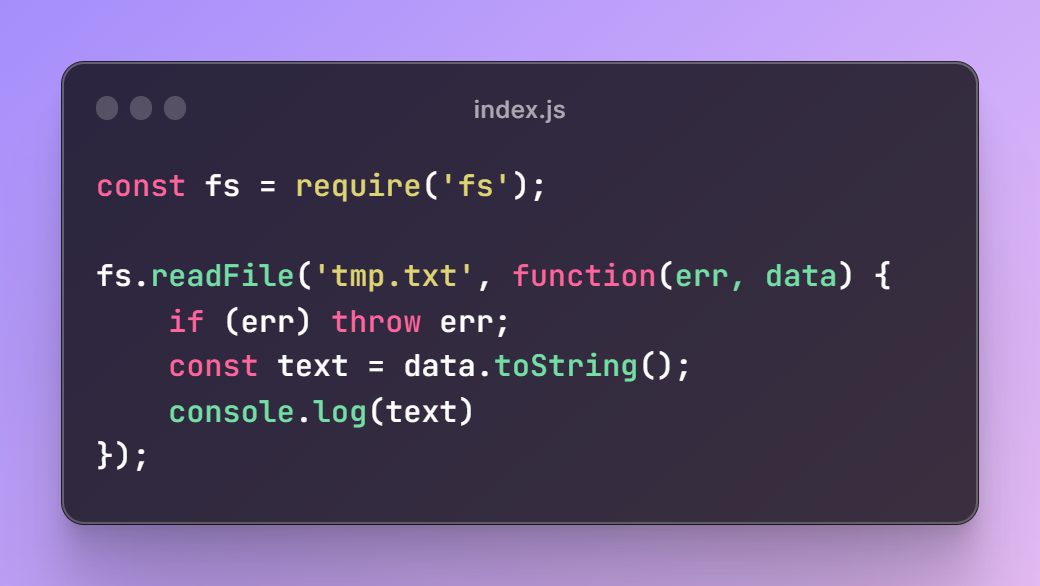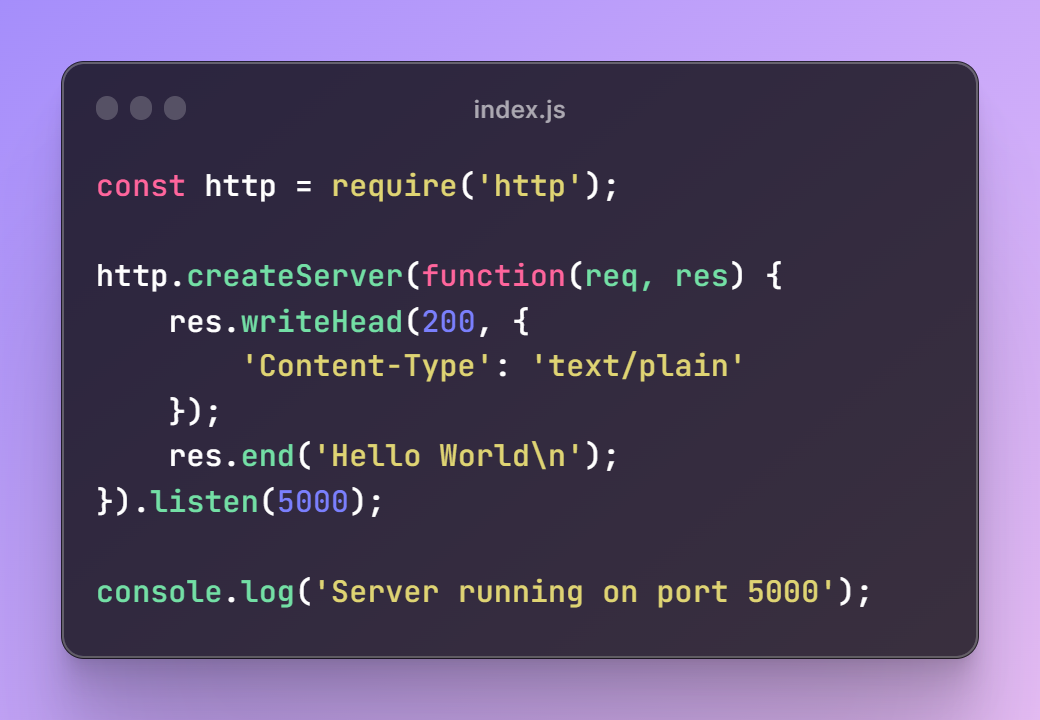How NodeJs works?
Firstly, What is NodeJs?NodeJs is a JavaScript runtime environment.
Traditionally we used to run JavaScript only in the browser (because they have JavaScript engines). Thanks to NodeJs we can run JavaScript anywhere.
We can build HTTP servers using NodeJs. Visit NodeJs and download Node.
Go to terminal and run the command node -v. If Node is succesfully installed, you will see the version.
Basics
Create a index.js file and write the below code.

If you run the command node index.js, it prints hello on the terminal.log() is a built-in method which lets you print to the console.
File I/O
Using built-in module fs provided by Node, we can manipulate file system on the server.
NodeJs for manipulating files on the server
Create a tmp.txt and place hello world ! in it. Now place the below code in index.js.

If you run the program, you will see hello world ! on the console.
Import fs module (built-in). The readFile method takes the file path and callback. The callback will be executed when the file is done being read.
The data will be in Buffer. We have to convert it to string using toString() method.
We can write/ append to files. We can even remove files by using fs module.
HTTP Server
NodeJs as HTTP Server - Serve static files or build API endpoints for various purposes.

http module is used for creating http server. If you hit the localhost port 5000, you will receive the data Hello World.
Import http module. The method createServer takes in a callback function. The req and res are Request and Response objects.
Request object contains the URL (path params, query params etc), body (json, blob etc), headers etc. We can append data to Response object that we want to send to the requester.
writeHead method lets you set headers. end method lets you end the current response process after sending (optional) data in it.
Using listen method we can set the port that we want our application to run.